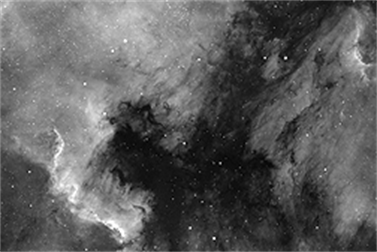




Astronomical observations list generation
Astronomical observations report and logging
The observation planner, when completed, will allow Coelix to become a true observation planner and logging software with the following features:
Astronomical observations report and logging
The observation planner, when completed, will allow Coelix to become a true observation planner and logging software with the following features:
Example: Part of an observation list for a Messier Marathon, built automatically by the COELIX program.
Automatically built lists
The following observation lists are generated automatically by the software for the current Coelix observing station. There are two types of lists:
The following observation lists are generated automatically by the software for the current Coelix observing station. There are two types of lists:
■
observation lists for one selected night
■
observation lists for one chosen month
Lists for one selected night
■
■
the 110 Messier objects
■
the 109 Caldwell objects
■
■
the 170 most beautiful deepsky objects to observe at telescope
■
■
the most beautiful double and multiple stars
■
more to come...
Listing order
To facilitate the selection of objects to observe, the elements of the lists may be displayed in one of several possible orders selected by the user, for example:
To facilitate the selection of objects to observe, the elements of the lists may be displayed in one of several possible orders selected by the user, for example:
■
catalogue number (Messier, NGC, IC, according to the type of object)
■
right ascension
■
meridian transit
■
observability (see definition below)
■
best time to observe (when observability is at its maximum)
■
Messier marathon (during one night for Messier objects only)
■
object ranking (stunning to difficult);
■
magnitude
■
separation (for double stars)
■
and so on...
Observability of an object
When you ask to generate an observation list for one night, COELIX computes the altitude above the horizon and the degree of observability of each object in the list for the whole night. The observability is rated from 0 to 99, as defined by the following table:
When you ask to generate an observation list for one night, COELIX computes the altitude above the horizon and the degree of observability of each object in the list for the whole night. The observability is rated from 0 to 99, as defined by the following table:
The maximum degree of observability of the night is indicated for each object in a small color-coded rectangle in the column "Best time / Observability" of the observation list. (View the example at the top of this page). Coelix uses the observability to build the list in the following orders: maximum degree of observability, best time to observe the object and Messier marathon.
Coelix uses the following data to compute the observability of an object at every moment:
Coelix uses the following data to compute the observability of an object at every moment:
■
object type, magnitude, size, surface brightness
■
altitude of the object above horizon
■
twilights (altitude of the Sun below the horizon)
■
illumination of the Moon (phase, altitude above the horizon, distance to the object)
■
artificial light pollution (to come)
Observability graphic of the selected object
When you click inside the line of an object in the observation list, you get an observability graphic of the selected object. This graph shows the curve of the altitude above the horizon of the object throughout the night. This curve is colored according to the degree of observability to facilitate the choice of the time of observation.
When you click inside the line of an object in the observation list, you get an observability graphic of the selected object. This graph shows the curve of the altitude above the horizon of the object throughout the night. This curve is colored according to the degree of observability to facilitate the choice of the time of observation.
This graph also shows the phase of the Moon, the twilights, and the altitudes of the Sun and of the Moon above the horizon.
Report, recording and observations logging
Coelix provides forms to quickly note the observed and measured properties of the celestial bodies in the observation list. There is also a text box to write a report of what you observed, remarks, suggestions, etc..
You also have the choice to save and print:
Coelix provides forms to quickly note the observed and measured properties of the celestial bodies in the observation list. There is also a text box to write a report of what you observed, remarks, suggestions, etc..
You also have the choice to save and print:
■
the observation list in the selected order
■
a brief report
■
a detailed report
■
etc..
Note: This feature in not yet available. It will be in a future free uptate.
Listed in order of Messier marathon
■
possibility of building lists of selected celestial objects, for observation during one night;
■
possibility to edit a description, a report of your observations, suggestions..., for each object or phenomenon in the observing list;
■
possibility to export, import, share your observation projects with other members of your club who own Coelix;
■
possibility to display the lists in any useful order: best time to observe, right ascension, magnitude, ranking(1..5 stars), or other depending on the type of objects in the list; projects are exported in iCalendar format, so that you will be able to import them in your favorite agenda or calendar application in your computer, tablet or mobile phone;
■
possibility to automatically generate lists of observations, for example: the most spectacular objects to observe tonight, the 20 most beautiful double stars of the night, Messier objects in the right order for a Messier marathon, and several others;
■
possibility to control your GOTO telescope from the lists generated inside the projects;
■
and so on ...
























